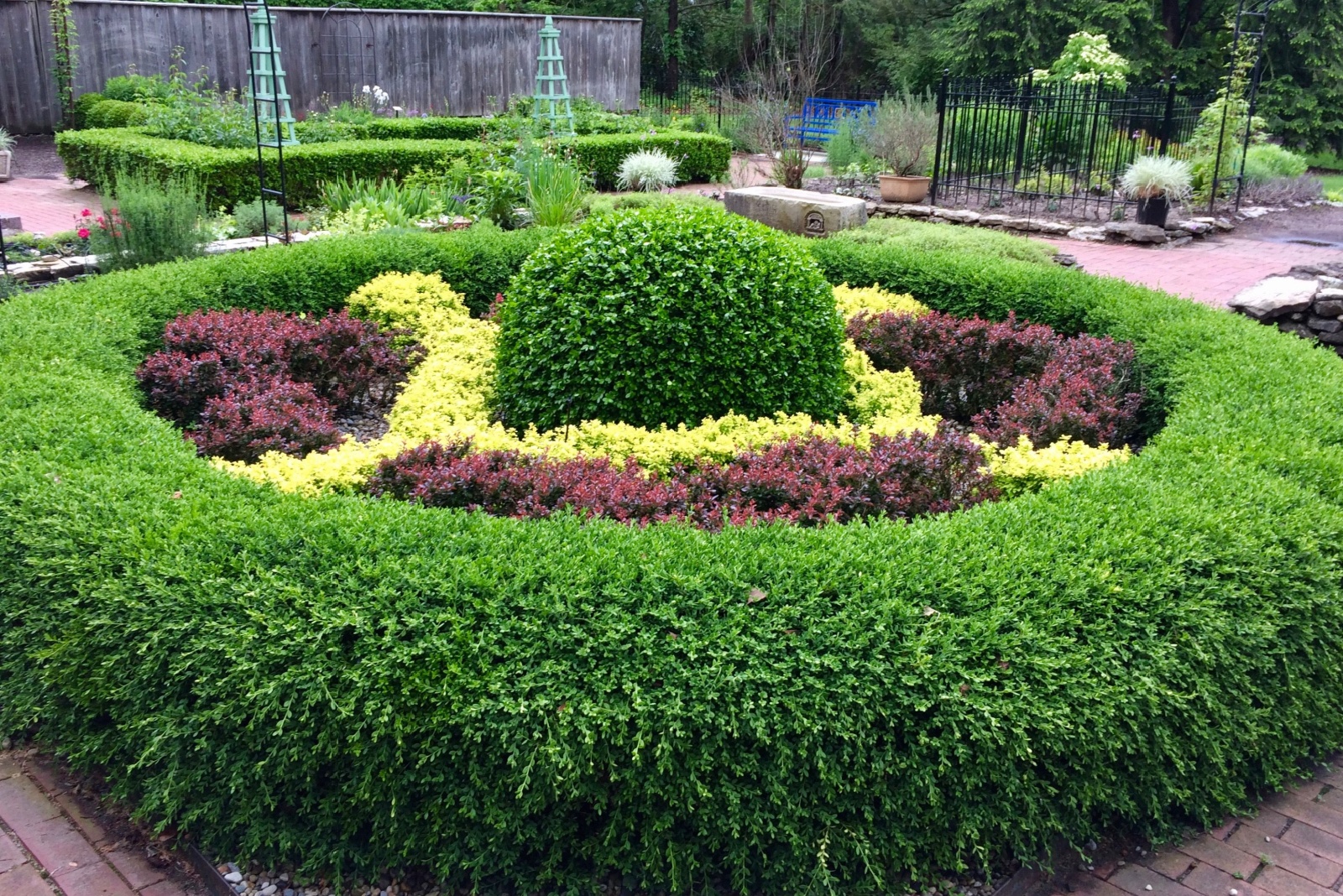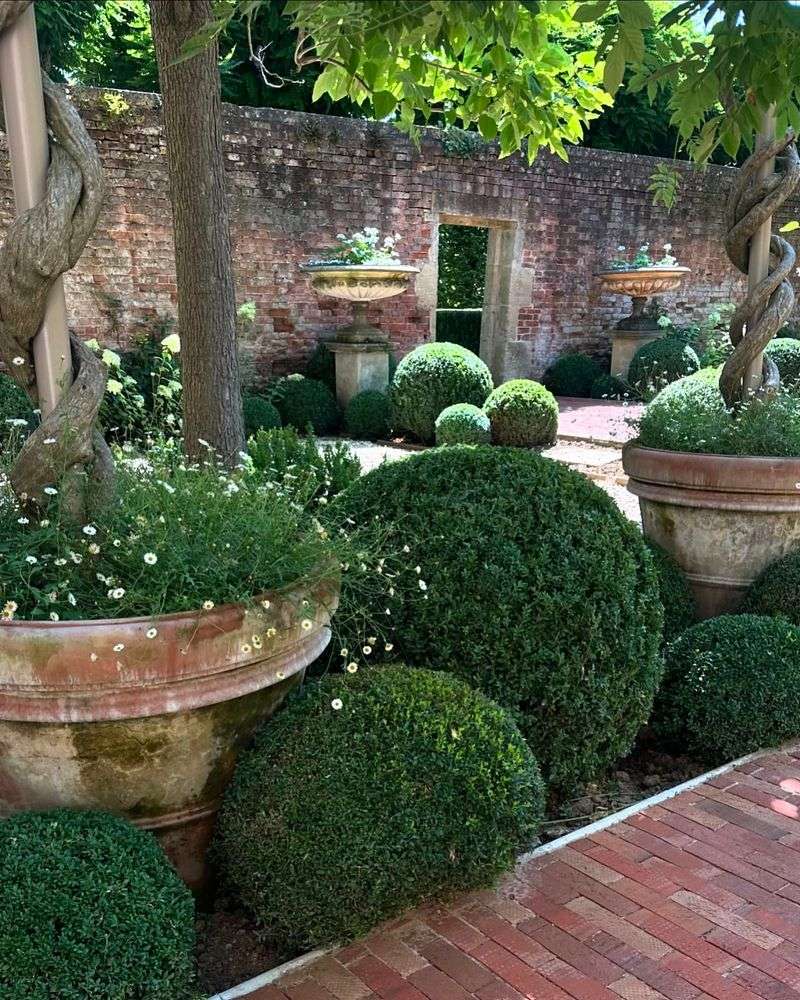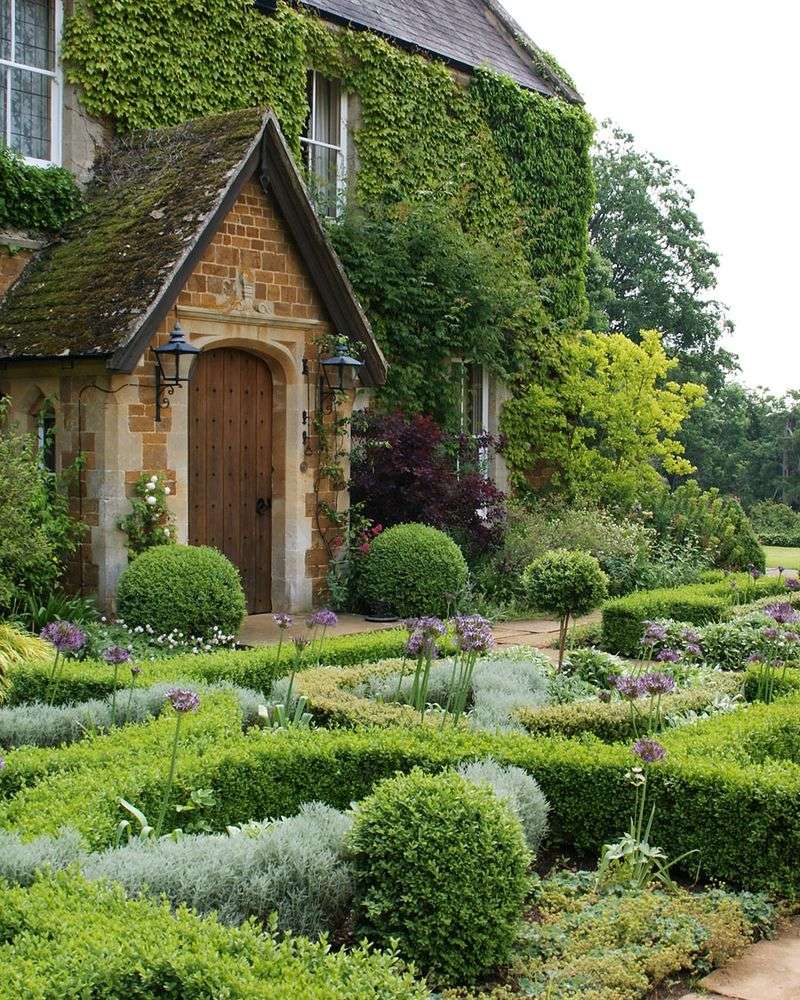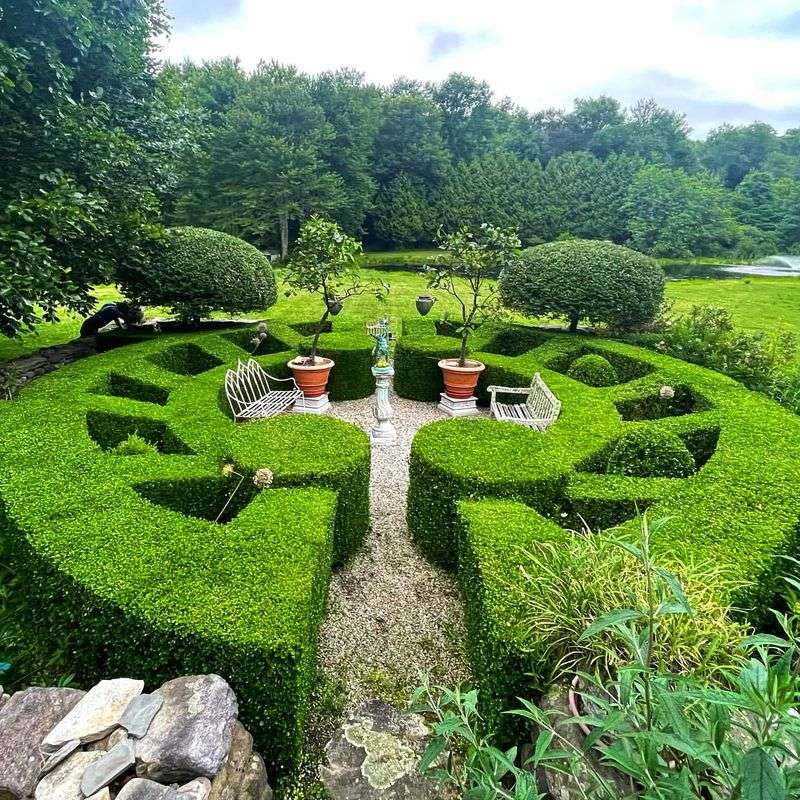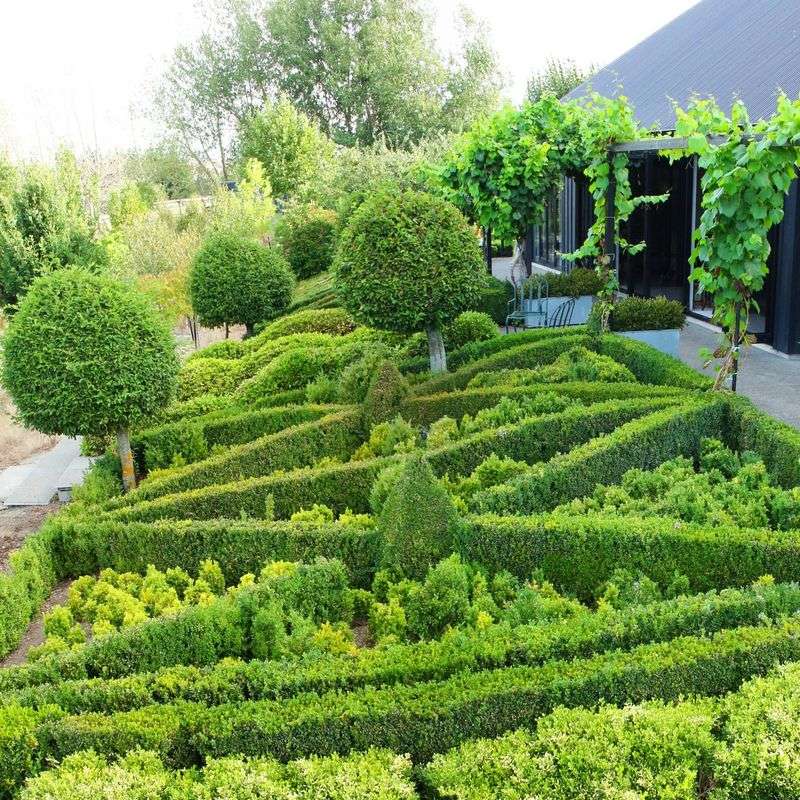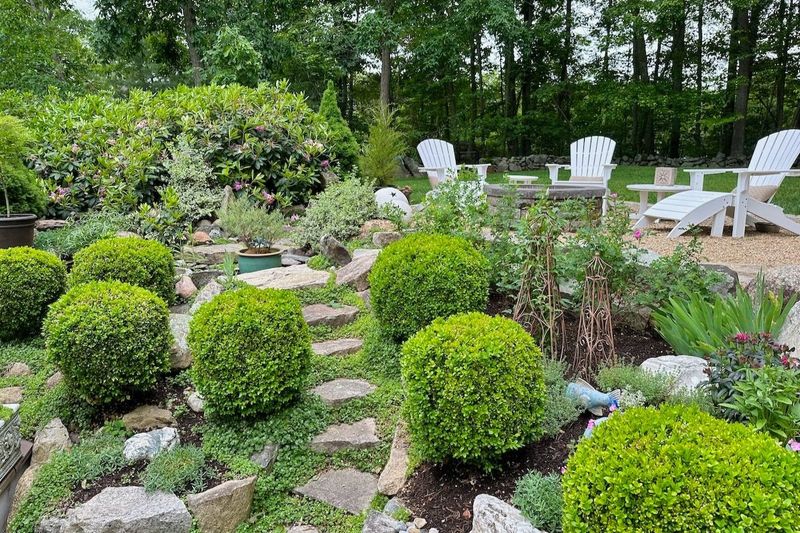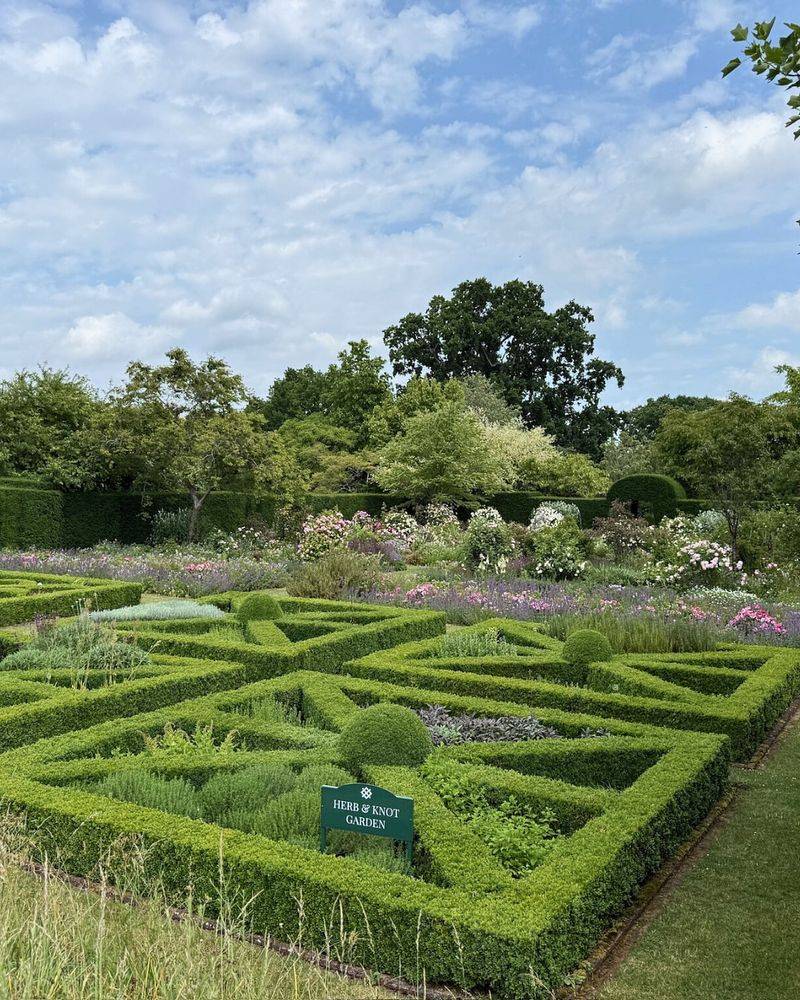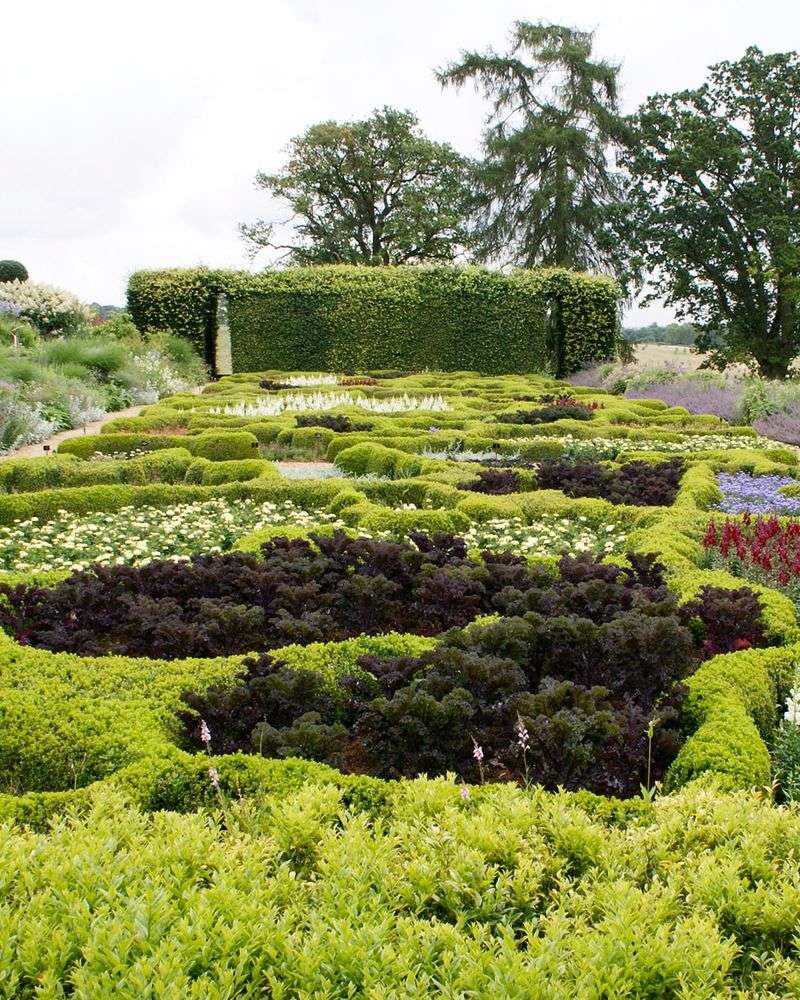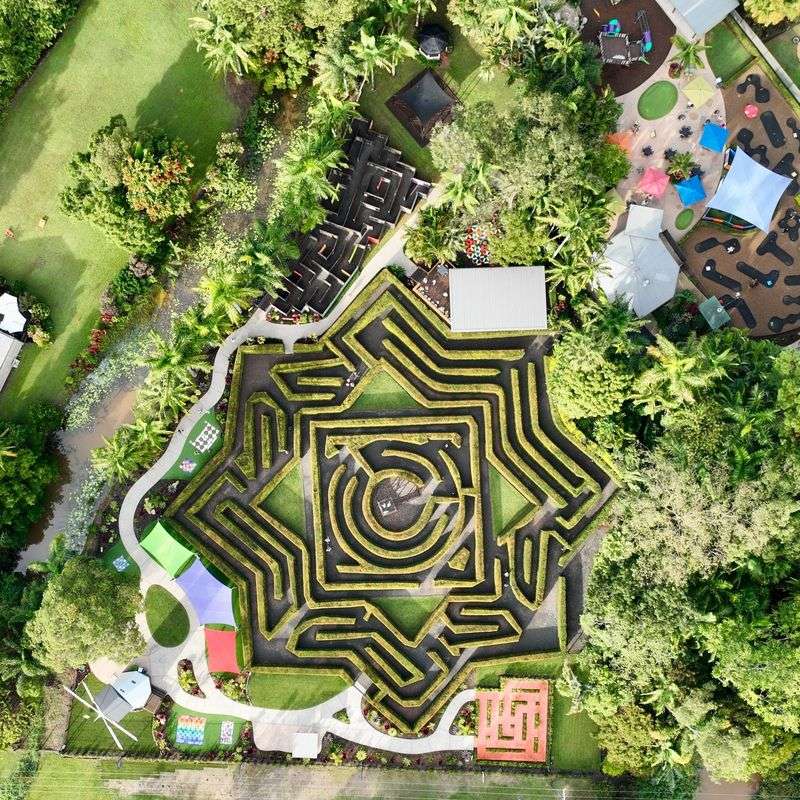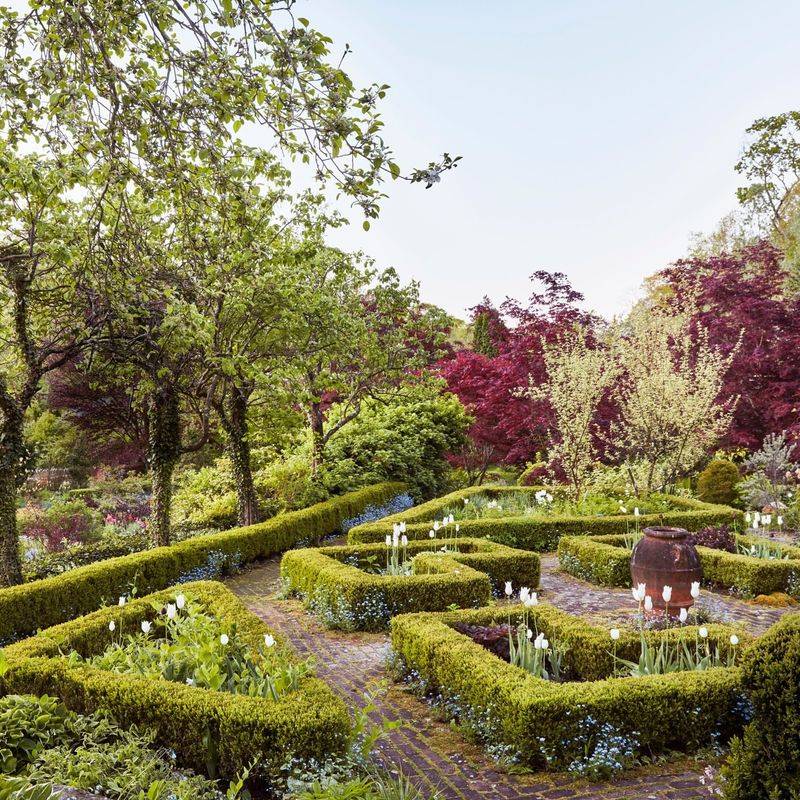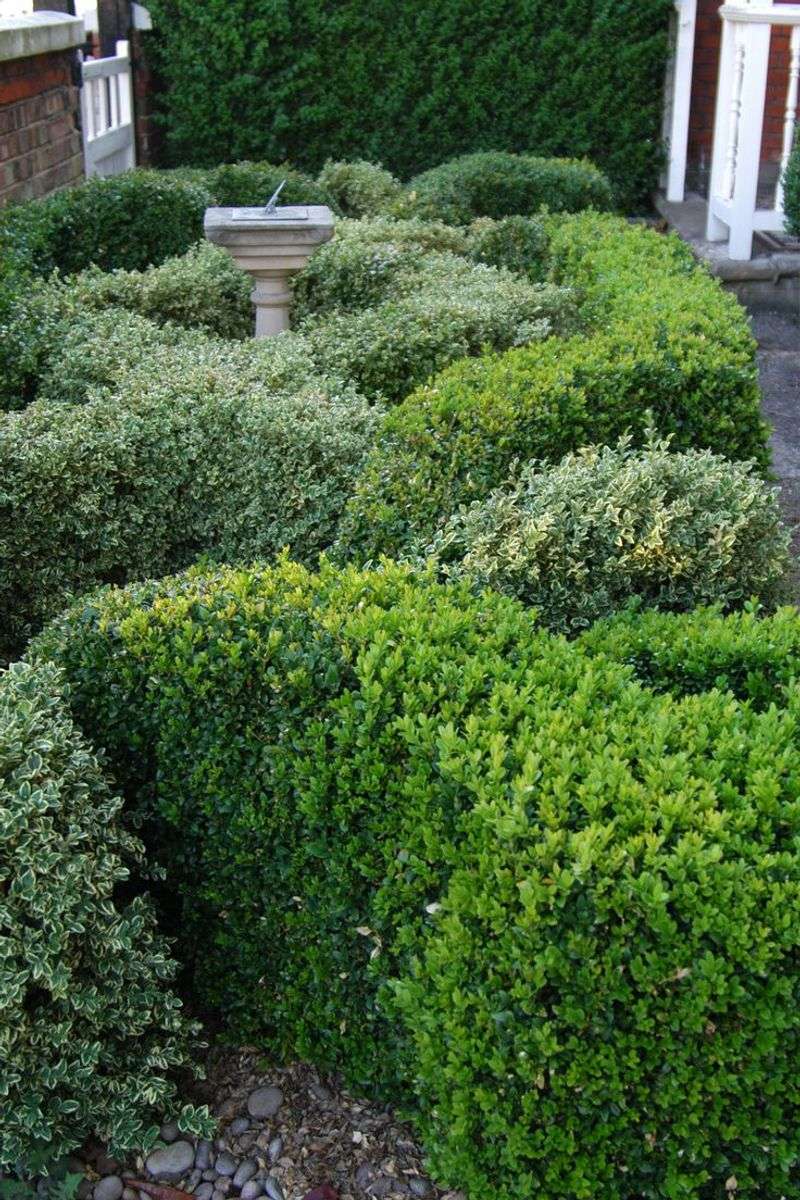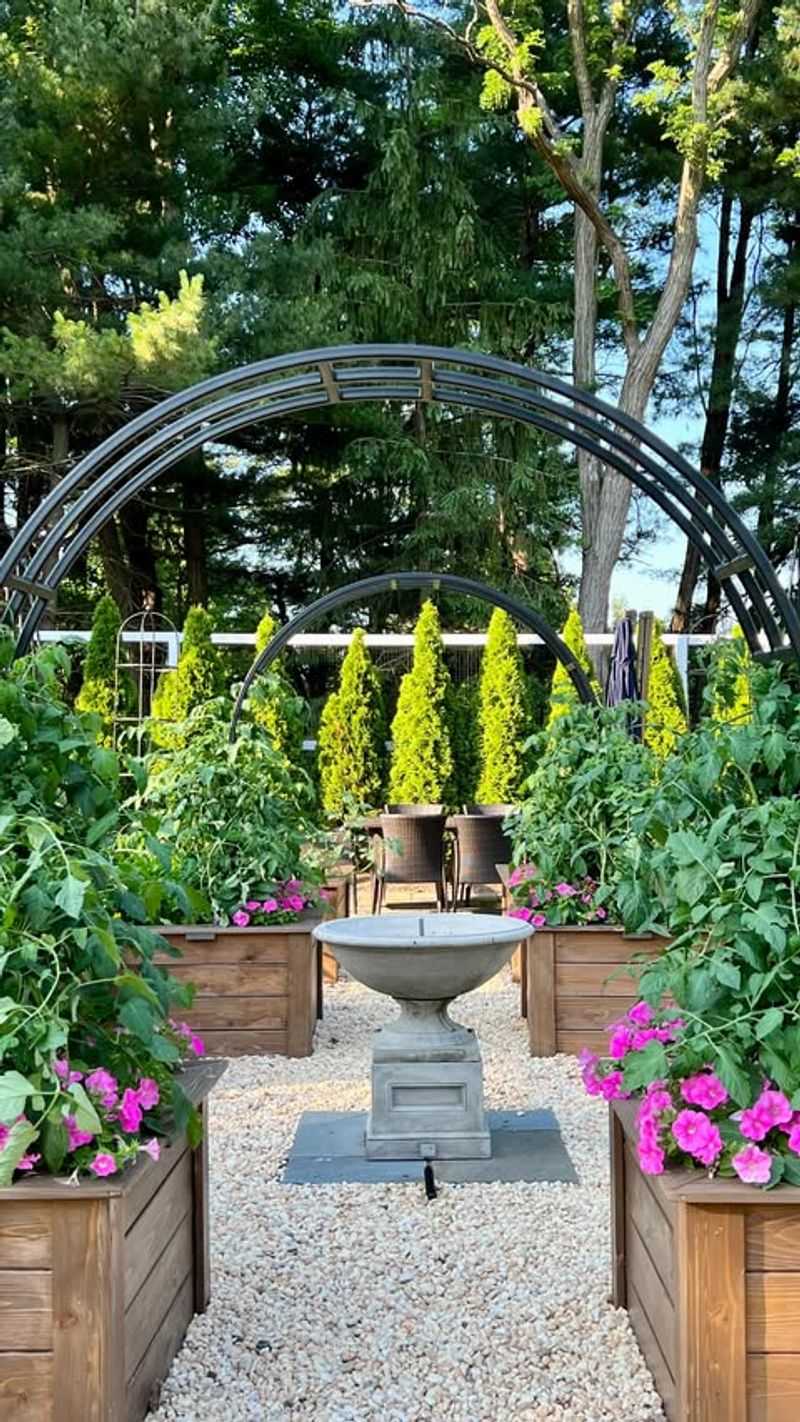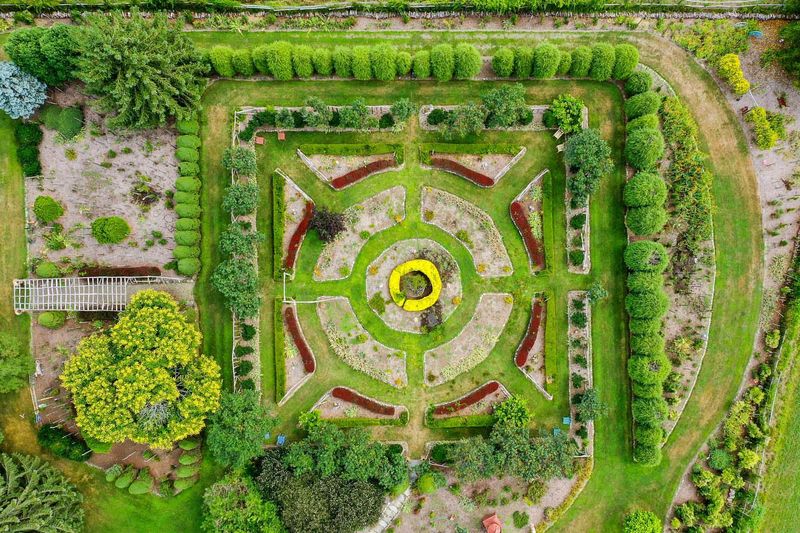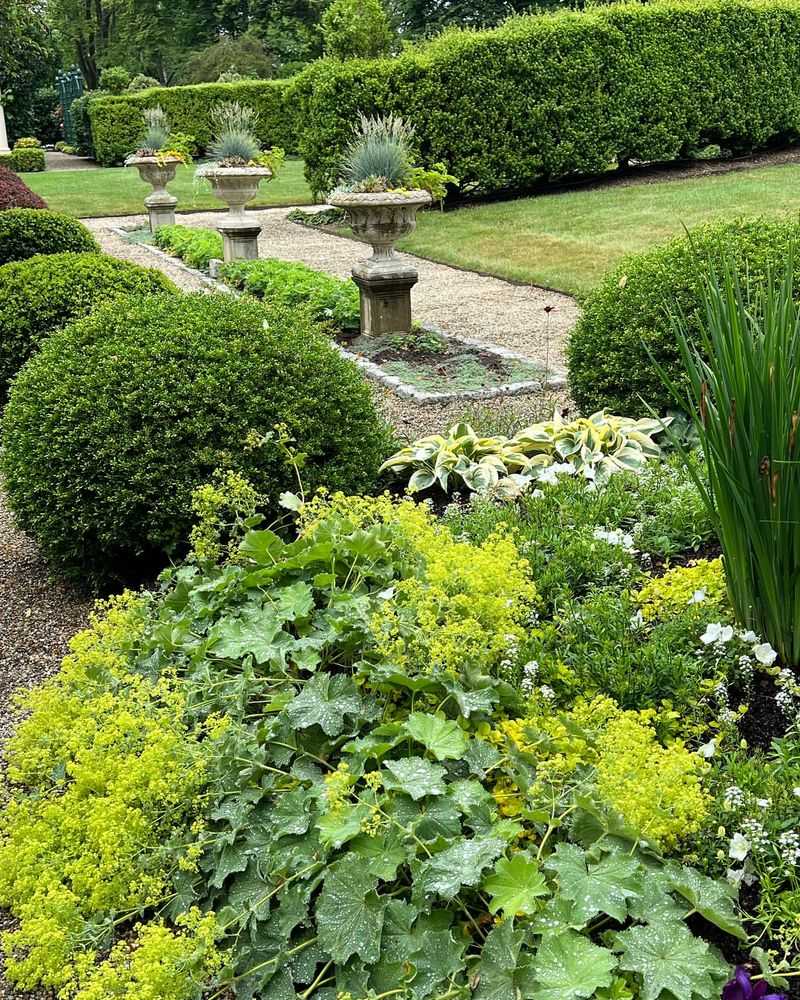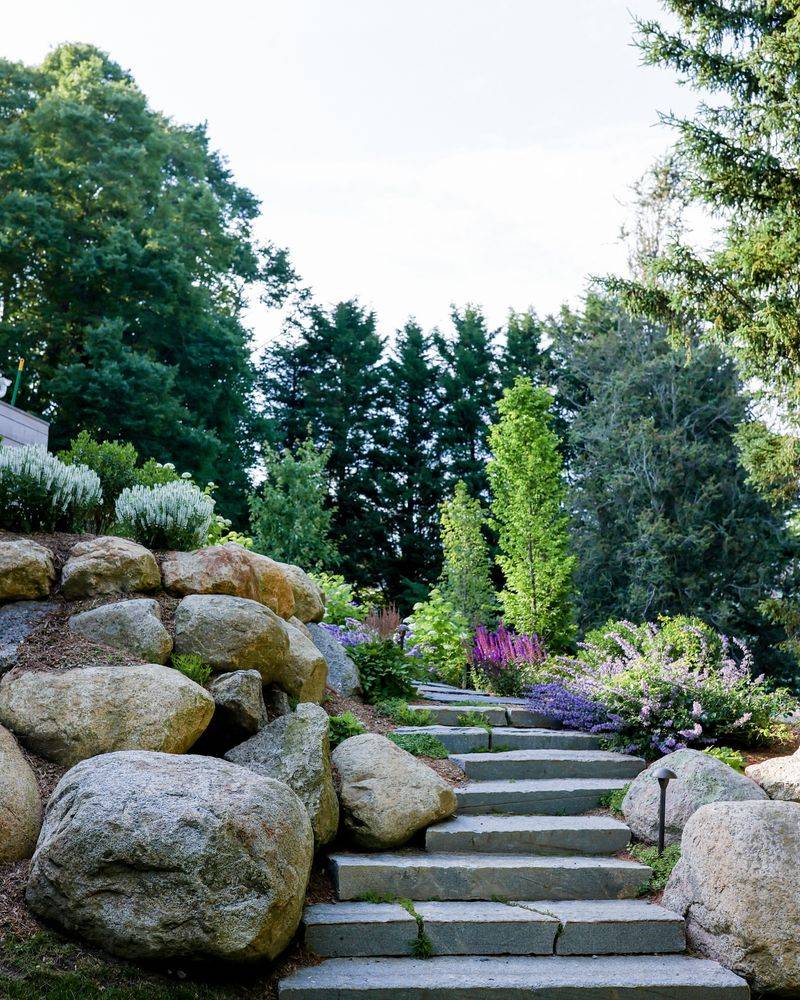Garden knot designs are making a big comeback in New England yards. These beautiful patterns use plants and pathways to create intricate designs that look amazing from above.
Knot gardens combine history with beauty, giving gardeners a chance to show off both their creativity and gardening skills in one stunning display.
1. Year-Round Visual Appeal
Knot gardens shine through every season, even during New England’s harsh winters. The structured patterns remain visible under light snow, creating a magical frost-outlined design when other garden elements disappear.
Many gardeners incorporate evergreens like boxwood and germander that hold their shape and color year-round. The strong geometric patterns provide visual interest even when flowering plants are dormant.
2. Connection To Regional History
Colonial New England gardens often featured these formal designs, creating a meaningful link to the region’s past. Walking through a knot garden feels like stepping back in time to when early settlers cultivated these elaborate patterns.
Historical societies throughout Massachusetts and Connecticut have been restoring original knot gardens at historic homes. The revival celebrates the gardening traditions that shaped the landscape of early American settlements.
3. Perfect For Smaller Spaces
Urban gardeners adore knot designs for their ability to maximize limited yard space. The compact nature of these gardens allows for dramatic impact without requiring acres of land. A knot garden measuring just 10×10 feet can incorporate dozens of plant varieties in an organized, visually stunning arrangement.
Townhome owners throughout Boston and Providence have embraced these space-efficient designs, transforming modest backyards into showstopping garden rooms.
4. Showcase For Native Plants
Innovative gardeners are reimagining traditional knot designs using native New England plants. Black chokeberry and lowbush blueberry create stunning dark outlines, while native ferns fill interior spaces with delicate texture.
Beyond beauty, these native adaptations support local pollinators and birds. The structured design highlights the ornamental qualities of indigenous plants that might otherwise be overlooked, proving that ecological gardening can be both formal and beautiful.
5. Climate-Resistant Structure
Knot gardens stand up remarkably well to New England’s unpredictable weather patterns. Their structured design helps prevent erosion during heavy spring rains while providing wind protection for more delicate interior plantings.
Gardeners in coastal areas particularly appreciate how these gardens withstand salt spray and strong ocean breezes. The dense, low-growing hedges that form the knot patterns create microclimates that shelter less hardy plants from temperature extremes.
6. Four-Season Herb Harvests
Practical New Englanders love combining beauty with function. Knot gardens traditionally feature culinary herbs that provide fresh flavors even under snow cover. Winter-hardy thyme, sage, and rosemary form gorgeous geometric patterns while supplying year-round kitchen ingredients.
The raised beds common in knot designs improve drainage in clay-heavy New England soils, extending the growing season for tender herbs like parsley and chives.
7. Low-Maintenance Elegance
Once established, knot gardens require surprisingly little upkeep compared to other garden styles. The defined spaces make weeding targeted and efficient, while the compact growing area minimizes watering needs.
Busy professionals appreciate how these gardens maintain their structure with just seasonal pruning sessions. Many New England gardeners report spending just a few hours monthly maintaining their knot gardens, compared to the weekly attention other garden styles demand.
8. Stunning Aerial Perspective
Drone photography has sparked renewed interest in these gardens designed to be viewed from above. Social media accounts featuring bird’s-eye views of New England knot gardens regularly rack up thousands of likes.
Homeowners with second-story windows or elevated decks particularly enjoy these designs. The patterns create living artwork that changes with the seasons, offering different visual experiences throughout the year when viewed from upstairs rooms or outdoor living spaces.
9. Perfect Canvas For Seasonal Color
Knot gardens brilliantly showcase New England’s dramatic seasonal changes. Spring bulbs create vibrant patterns that give way to summer perennials, followed by autumn’s fiery foliage display. Gardeners love how the structured framework highlights seasonal transitions.
Many designs incorporate early snowdrops and crocus, summer lavender and catmint, then finish with autumn sedums and ornamental kale, creating continuous color within the same organized pattern.
10. Community Gathering Spaces
Public knot gardens have become popular meeting spots in New England towns. Their distinct pathways naturally create conversation areas where neighbors connect while admiring the plantings. Community gardens from Portsmouth to Mystic have incorporated knot designs as centerpieces.
Garden clubs host seasonal events in these spaces, using the geometric patterns as natural dividers for different activities, from plant swaps to outdoor painting classes.
11. Educational Opportunities
Schools across New England have embraced knot gardens as living classrooms. The geometric patterns teach math concepts, while plant selection offers lessons in history, ecology, and climate adaptation. Students at Springfield Elementary created a Tudor-inspired knot garden, researching period-appropriate plants and design principles.
The project combined art, history, and science curriculum while giving children hands-on gardening experience and a beautiful campus feature they maintain throughout the school year.
12. Accessibility For Aging Gardeners
Raised knot garden beds offer perfect solutions for older New England gardeners who want to continue their passion without kneeling or bending. The elevated structures minimize back strain while creating striking visual patterns.
Retirement communities throughout the region have installed knot gardens with wide paths accommodating walkers and wheelchairs. The organized layout makes navigation intuitive, while the raised edges provide convenient seating for those who need occasional rest while gardening.
13. Property Value Enhancement
Real estate agents report that homes with knot gardens command premium prices in New England markets. Their distinctive appearance and historical significance create memorable property listings that stand out from standard landscaping.
A Massachusetts real estate study found that formal gardens, particularly knot designs, increased property values by up to 15%. The combination of sophisticated design and low maintenance appeals to buyers seeking distinctive homes with manageable outdoor spaces.
14. Therapeutic Garden Design
Mental health professionals throughout New England recommend knot gardening for its meditative benefits. The repetitive patterns of planting and maintenance provide soothing, focused activity that reduces anxiety. Hospitals in Boston and Providence have installed healing knot gardens for patients and staff.
Walking the intricate pathways creates a labyrinth-like experience that promotes mindfulness, while the enclosed spaces offer comforting boundaries for those feeling overwhelmed.
15. Celebration Of Craftsmanship
Knot gardens honor New England’s tradition of meticulous craftsmanship. Creating these gardens requires precision, patience, and artistic vision—qualities long celebrated in regional furniture making and architecture.
Garden designers compare creating knot patterns to other traditional New England crafts like quilting and boat building. Many gardeners document their creation process, sharing progress photos that showcase the transformation from bare soil to living geometric art.

